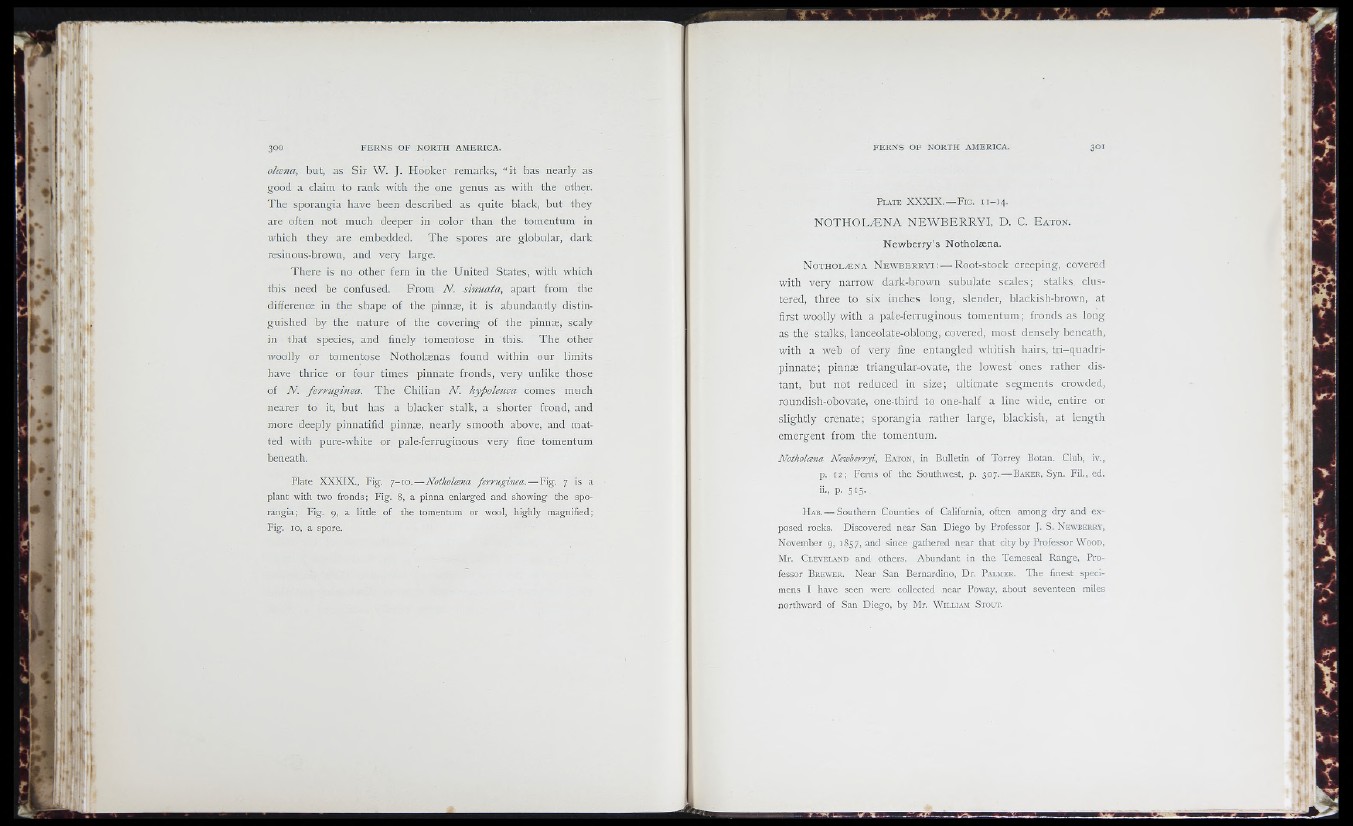
IJ»
. . 1
\
» . ■ I ' ■ '
i « ' i
1
I r i ' i
L s ■*
u il’ ’
' ( r i
3 0 0 F E R N S O F N O R T H AM E R IC A .
oiæna, but, as Sir W. J . Hooker remarks, “ it has nearly as
good a claim to rank with the one genus as with the other.
The sporangia have been described as quite black, but they
arc often not much deeper in color than the tomentum in
which they are embedded. The spores are globular, dark
resinous-brown, and very large.
There is no other fern in the United States, with which
this need be confused. From N. sinuata, apart from the
difference in the shape of the pinnæ, it is abundantly distinguished
by the nature of the covering of the pinnæ, scaly
in that species, and finely tomentose in this. The other
woolly or tomentose Notholænas found within our limits
have thrice or four times pinnate fronds, very unlike those
of N. ferruginea. The Chilian N. hyfoleuca comes much
nearer to it, but has a blacker stalk, a shorter frond, and
more deeply pinnatifid pinnæ, nearly smooth above, and matted
with pure-white or pale-ferruginous very fine tomentum
beneath.
Plate X X X IX ., Fig. 7 - 10 .— Notholeena fe rru gin ea.— Fig. 7 is a
plant with two fronds; Fig. 8, a pinna enlarged and showing the sporangia;
Fig. 9, a little of the tomentum or wool, highly magnified;
Fig. 10, a spore.
h '
i
*
F E K N S O F N O R TH AMERICA.
P l a t e X X X IX .— F ig . 1 1 - 1 4 .
NO THO LÆ NA N EW B E R R Y I , D. C. E a t o n .
Newberry’s Notholæna.
N o t h o l æ n a N e w b e r r y i : — Root-stock creeping, covered
with very narrow dark-brown subulate scales; stalks clustered,
three to six inches long, slender, blackish-brown, at
first woolly with a pale-ferruginous tomentum; fronds as long
as the stalks, lanceolate-oblong, covered, most densely beneath,
with a web of very fine entangled whitish hairs, tri-quadri-
pinnate; pinnæ triangular-ovate, the lowest ones rather distant,
but not reduced in size; ultimate segments crowded,
roundish-obovate, one-third to one-half a line wide, entire or
slightly crenate; sporangia rather large, blackish, at length
emergent from the tomentum.
Notholæna Newberryi, E a ton , in Bulletin of Torrey Botan. Club, iv .,
p. 12 ; Ferns of the Southwest, p. 307. — B a k e r , Syn. Fil., ed.
ih, p- 5 UH
a b .— Southern Counties of California, often among dry and exposed
rocks. Discovered near San Diego by Professor J . S. N ew b e r r y ,
November g, 1857, and since gathered near that city by Professor W ood,
Mr. C l e v e l a n d and others. Abundant in the Temescal Range, Professor
B r ew e r . Near San Bernardino, Dr. P a lm e r . The finest specimens
I have seen were collected near Poway, about seventeen miles
northward of San Diego, by Mr. W il l ia m S to u t .
’ ■I
f
fi I